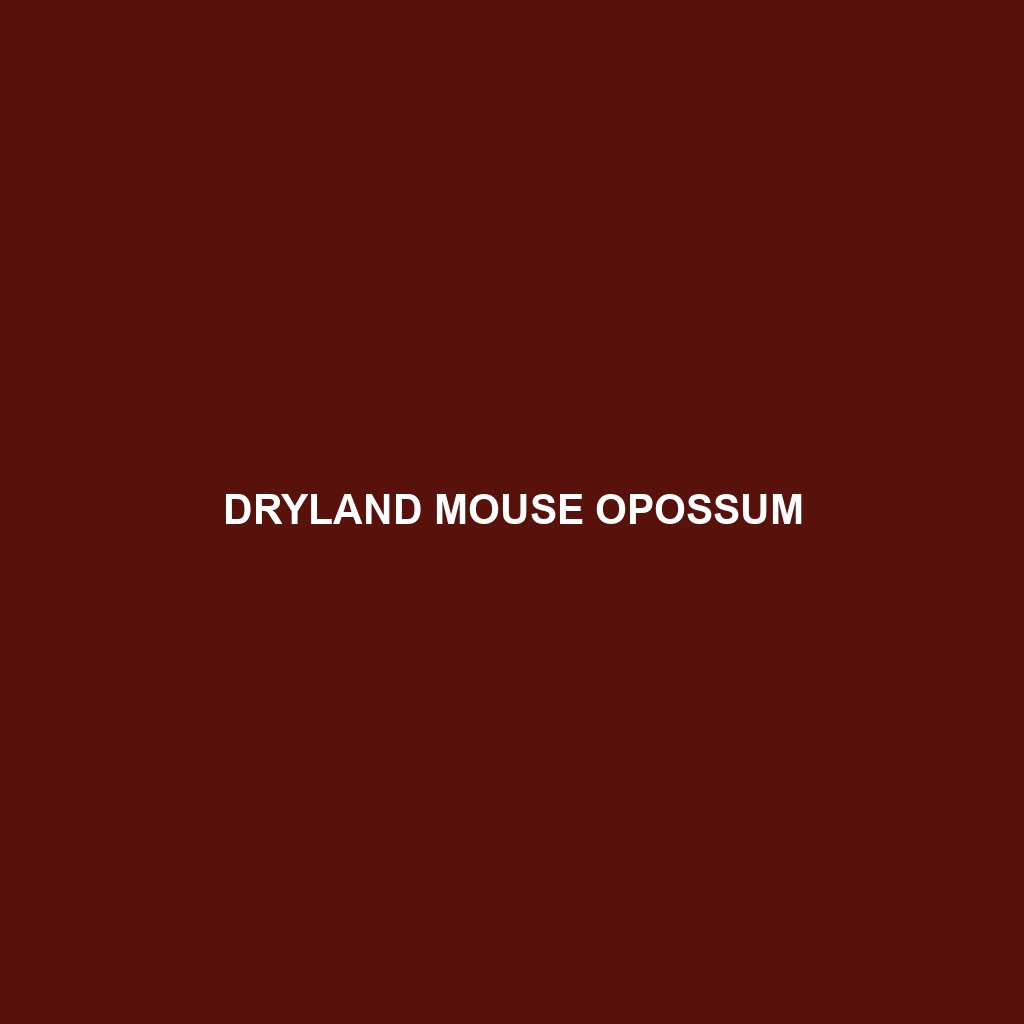Dryland Mouse Opossum: A Comprehensive Guide
The Dryland Mouse Opossum (Thylamys spp.) is a small, nocturnal marsupial native to the arid and semi-arid regions of South America. Renowned for its adaptability to harsh environments, this diminutive creature plays a significant role in the ecosystem. With its distinct features and survival strategies, the Dryland Mouse Opossum is a fascinating subject of study for both researchers and wildlife enthusiasts.
Physical Characteristics
Size: The Dryland Mouse Opossum is relatively small, with an average body length ranging from 10 to 15 cm (4 to 6 inches), and a tail that can be as long as its body or slightly longer, adding an additional 10 to 16 cm (4 to 6.5 inches).
Coloration: Its fur is typically grayish-brown on the dorsal side, providing excellent camouflage against the dry, rocky landscapes it inhabits. The ventral side is usually lighter, often white or cream-colored.
Special Features: One of the most notable features of the Dryland Mouse Opossum is its prehensile tail, which it uses for balance and grasping branches. Additionally, this species has large, prominent eyes adapted for nocturnal vision, and sharp, pointed ears that aid in detecting predators and prey.
Behaviors
Social Interactions: The Dryland Mouse Opossum is generally solitary, except during the mating season. Males and females communicate primarily through scent markings and vocalizations.
Feeding Habits: An omnivorous forager, this marsupial’s diet includes insects, small vertebrates, fruits, and seeds. It uses its acute sense of smell and hearing to locate food during nighttime forays.
Ecological Roles: As both predator and prey, the Dryland Mouse Opossum plays a crucial role in controlling insect populations and serving as a food source for larger predators. Its foraging activities also aid in seed dispersal, contributing to the health of its ecosystem.
Habitats
Natural Environment: This species thrives in dry, rocky terrains, such as scrublands, deserts, and dry forests. It often seeks refuge in crevices, burrows, or under rocks during the day to avoid the harsh sun and predators.
Range: The Dryland Mouse Opossum is found across various regions in South America, particularly in countries like Argentina, Bolivia, Brazil, and Paraguay.
Adaptations
Behavioral Adaptations: Nocturnality helps the Dryland Mouse Opossum avoid daytime predators and the extreme heat of its arid habitat. Its solitary nature reduces competition for limited resources.
Physical Adaptations: The prehensile tail, sharp claws, and keen senses of smell and hearing are all evolutionary traits that enhance its ability to forage and evade predators.
Physiological Adaptations: This marsupial can survive on minimal water, deriving moisture from its food, which is crucial for living in dry environments.
Conservation Status
The IUCN (International Union for Conservation of Nature) currently lists various species within the Thylamys genus with different conservation statuses. While some species are considered Least Concern, others face threats from habitat destruction and climate change. Conservation efforts focus on habitat preservation and mitigating human-induced environmental impacts.
Fun Facts
Marsupial Characteristics: Like all marsupials, the Dryland Mouse Opossum gives birth to relatively undeveloped young that continue to grow and develop in the mother’s pouch.
Hibernation-Like State: During extreme conditions, such as food scarcity or cold weather, this opossum can enter a state akin to hibernation, known as torpor, to conserve energy.
Agility: Despite their small size, Dryland Mouse Opossums are agile climbers, using their prehensile tails and sharp claws to navigate their rugged landscapes.
The Dryland Mouse Opossum is a remarkable example of nature’s adaptability, thriving in some of the most challenging environments on the planet. By understanding and appreciating its unique characteristics and ecological importance, we can better advocate for the conservation of this and other vital species.
